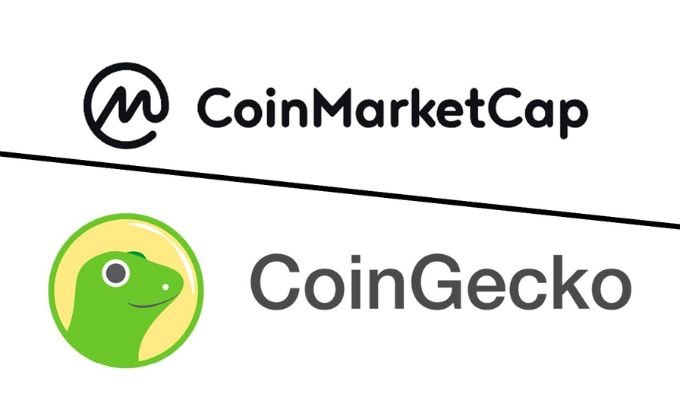Thinking about jumping into crypto for the first time? You’ve probably seen the headlines and heard stories from friends, but the world of digital currency can feel like a maze. This beginner’s guide to cryptocurrency investing is here to help you make sense of it all. We’ll nail down the essentials, break down the technology, and share honest insights to empower your first steps—no buzzwords, just clarity.
Table of Contents
Cryptocurrency Basics: Your Digital Money Map
Cryptocurrency is a digital form of money powered by blockchain technology. It’s decentralized, which means there’s no central bank or company watching over every transaction. Everything is tracked openly and securely across thousands of computers.

Cryptocurrencies like Bitcoin (BTC) and Ethereum (ETH) work without middlemen. You can send money around the world in minutes, anytime. No waiting for the bank to open or asking permission. That’s a game-changer for millions of people—with both rewards and risks.
How Blockchain Technology Works
Blockchain technology is the bedrock of cryptocurrency. Imagine a giant, public notebook shared across the planet. Every transaction is a new entry. Each entry is linked to the last, making a “chain.” Once written, you can’t just erase or change an entry. Cryptography (the art of secret codes) keeps everything locked up and honest. This approach enables security, transparency, and trust without a central authority.
Why People Invest in Crypto: Hopes, Risks, and Realities
People invest in cryptocurrencies for growth, innovation, and financial independence—but markets are volatile and complex.
Many are attracted to the high potential returns. Others love the idea of Decentralized Finance (DeFi), which lets you lend, borrow, and earn interest, bypassing traditional banks altogether. Crypto can also offer fast, low-cost international payments and the promise of “owning your money.”
But it’s not a fairy tale. Cryptocurrency prices are famously wild, and the technology takes time to understand.
Real Experience: Learning the Ropes
Take James, a high school teacher in Maryland. He set aside $100 to try out crypto after a friend recommended it. Instead of guessing, he went through the University of Michigan – Blockchain and Cryptocurrency Explained course online. He bought a slice of Ethereum (ETH) and started reading about Bitcoin (BTC) and other coins on CoinMarketCap. By approaching it as a learning journey and not a get-rich-quick scheme, James reduced his stress and made smarter decisions—sometimes by not buying certain coins at all.
Bitcoin (BTC) vs. Ethereum (ETH): What’s the Difference?

In a Nutshell:
Bitcoin (BTC) is digital gold for storing value, while Ethereum (ETH) is a build-your-own-apps playground for developers.
- Bitcoin (BTC):
The pioneer. Created in 2009, it’s the most widely recognized and valuable cryptocurrency. Its main use is transferring value securely without any central oversight. Bitcoins are created and the network is safeguarded by cryptocurrency mining—powerful computers solving puzzles and verifying transactions. - Ethereum (ETH):
This platform, launched in 2015, takes everything further. Its big innovation is smart contracts—computer programs that run automatically when certain conditions are met. You’ll find DeFi apps, games, and digital art (NFTs) running on Ethereum. The Ethereum network recently moved to a “Proof of Stake” system, which is more energy-efficient than mining.
Beyond Bitcoin: All About Altcoins
Altcoins are any cryptocurrencies that aren’t Bitcoin. Some offer unique technology, speedy payments, or other improvements.
- Cardano (ADA): Focuses on research-driven upgrades and energy efficiency.
- Solana (SOL): Prides itself on lightning-fast transactions, making it a favorite for decentralized apps.
- XRP: Targets quick, cheap international payments.
These altcoins run on their own blockchains or are tokens built on top of existing ones, like Ethereum.
You can explore live data, prices, and historical stats for all these coins on comparison sites like CoinMarketCap and CoinGecko.
Quick Table: Bitcoin, Ethereum, and Major Altcoins
| Feature | Bitcoin (BTC) | Ethereum (ETH) | Altcoins (e.g., ADA, SOL, XRP) |
|---|---|---|---|
| Launched | 2009 | 2015 | 2012–present |
| Main Purpose | Store of value | Smart contracts | Varied: speed, utility, payments |
| Supply Cap | 21 million | No cap | Most capped, varies per project |
| Consensus | Proof-of-Work | Proof-of-Stake | Mix of Proof-of-Stake/others |
What Is DeFi? Getting Real About Decentralized Finance
DeFi stands for “decentralized finance.” It’s a way to use your crypto for financial services—like saving, lending, or trading—without banks or brokers.
With DeFi, you use smart contracts (apps on the blockchain) to do everything from earning interest on your savings to trading tokens instantly. For example, Emma, a recent college grad, deposited stablecoins into a decentralized lending app and earned more interest in a month than her bank gave her in a year. But she also learned that DeFi comes with unique risks: if the app’s code has bugs or a hacker finds a loophole, funds could be lost.
How Cryptocurrency Mining Powers the Network
Not all cryptocurrencies are created or maintained the same way. Bitcoin (BTC) is famous for “mining.” Here’s what that means in plain English:
- Computers compete to solve complex math problems.
- The winner gets to add the next block of transactions (hence the “blockchain”)—and earns some new coins as a reward.
- This uses a lot of electricity, so some new networks like Ethereum (ETH) have switched to different systems (staking).
Mining is crucial for security but can be costly for individuals. For most beginners, direct mining isn’t recommended, but it’s helpful to know why and how new coins are created.

Researching Crypto: Using CoinMarketCap and CoinGecko
Before investing, always do research.
CoinMarketCap and CoinGecko are leading resources for crypto market data.
- See real-time prices, trading volumes, and historical charts.
- Sort coins by category: DeFi, altcoins, tokens, and more.
- Check out each project’s official links and whitepapers (the technical documents explaining their goals).
Both sites help you compare and track coins and tokens, making them vital for anyone following this beginner’s guide to cryptocurrency investing.
If you’re interested in exploring different perspectives on getting started with crypto, be sure to check out our guides on mindjournal.co, techbullion.in and gogonihon.jp.net
Step-by-Step: How to Start Your Crypto Investing Journey

Here’s a hands-on walkthrough for your first investment, with no jargon.
- Find a Reputable Exchange:
Start with trusted names like Coinbase, Gemini, or Kraken. Check they operate in your region. - Register & Verify Your ID:
Upload documents to verify your identity for security and compliance. - Deposit Money:
Wire funds or pay by debit/credit card. - Research Before Buying:
Read up on Bitcoin (BTC), Ethereum (ETH), or any altcoins you’re eyeing. Use those comparison sites! - Make Your First Buy:
Start small—buying a fraction is totally fine. - Transfer to a Crypto Wallet:
For more control, move your coins off the exchange.
For useful tools and services beyond the crypto world, explore TokyoMart.store, an e-commerce store for the latest gadgets, and LinkLuminous.com, a digital agency offering smart solutions for your online growth.
Crypto Wallets: The Key to Digital Self-Custody
A crypto wallet stores your coins securely. There are two main types:
| Wallet Type | Online? | Security Level | Best For | Examples |
|---|---|---|---|---|
| Hot Wallet | Yes (internet) | Moderate | Quick access/trading | MetaMask, Exodus |
| Cold Wallet | No (offline) | Very High | Long-term storage | Ledger, Trezor |
Tip: Only share your address, never your private key or recovery phrase. If someone learns those, they can take your funds—and there’s no bank to help recover them.
Cryptocurrency Investing: Strengths and Weak Spots

Why Get Excited
- Access & Inclusion: You don’t need a credit score or big bank account.
- Transparency: The blockchain is open for all to see.
- Speed: Send money overseas in minutes, not days.
- Innovation: Keep up with trends in finance, gaming, and digital art.
Areas to Watch Out For
- Volatility: Prices can see-saw fast.
- Tricky Tech: DeFi and obscure altcoins require lots of homework.
- Security Threats: Scams and hacks do happen.
- Regulation Uncertainty: Laws are still being developed and rules can shift quickly.
- Sustainability Concerns: Mining takes energy; newer models like staking are better but not the norm everywhere.
Real-Life Use Cases: Crypto at Work
- Cross-border Payments: Migrant workers use cryptos like XRP or Bitcoin to send money overseas with tiny fees and fast speeds.
- DeFi Interest Accounts: Some users earn 5–10% APY by lending on decentralized borrowing apps.
- NFTs and Digital Art: Artists turn art into digital assets and sell worldwide.
- Charity & Crowdfunding: Crypto donations cut through borders and red tape for fast, transparent donations.
Learning and Research Resources
- CoinMarketCap and CoinGecko for market data and coin comparisons.
- University of Michigan – Blockchain and Cryptocurrency Explained is a top-rated course for true beginners to understand the basics.
- Online Community: Talk with others on forums or social media, but always double-check what you read!
FAQ: Beginner’s Guide to Cryptocurrency Investing
1. Is cryptocurrency a safe investment for beginners?
Crypto involves risks. Only invest money you can afford to lose, start with reliable coins, and use secure wallets.
2. How do I choose a good cryptocurrency?
Start with established names like Bitcoin (BTC) or Ethereum (ETH). Compare stats and projects using CoinMarketCap or CoinGecko. Check their official documents for goals and tech.
3. What’s the minimum investment to get started?
Most platforms let you start with as little as $10.
4. Why are crypto prices so volatile?
The market is global, trades 24/7, and isn’t controlled by any authority. News, demand, and new tech all create rapid swings.
5. Do I have to mine to own crypto?
No. Most people buy or “stake” coins, but mining is how some are created and secured.
6. Are crypto transactions private?
Anyone can see wallet balances and transfers, but you don’t need to share personal info with the blockchain.
7. How is cryptocurrency taxed?
Most countries treat profits as capital gains. Always check local laws and keep good records.
Comparison Table: Bitcoin, Ethereum, & Altcoins
| Coin/Category | Launch Year | Supply Cap | Purpose | Consensus | Wallet Examples |
|---|---|---|---|---|---|
| Bitcoin (BTC) | 2009 | 21 million | Store of value, payments | Proof-of-Work | Ledger, Trezor |
| Ethereum (ETH) | 2015 | None | Smart contracts, DeFi, apps | Proof-of-Stake | MetaMask, Ledger |
| Altcoins | 2012+ | Varies | Niche tech, fast payments | Mixed | Varies widely |
Wrapping Up: Your First Steps Forward
The crypto world is vast and always changing, but this beginner’s guide to cryptocurrency investing gives you a firm starting point. Begin with understanding blockchain technology, compare coins using reputable data platforms, and always use proper security—with your own crypto wallet.
Keep learning (a course like the University of Michigan – Blockchain and Cryptocurrency Explained is a good investment) and stay curious. Remember, it’s not about chasing quick riches, but about building long-term knowledge and confidence.

